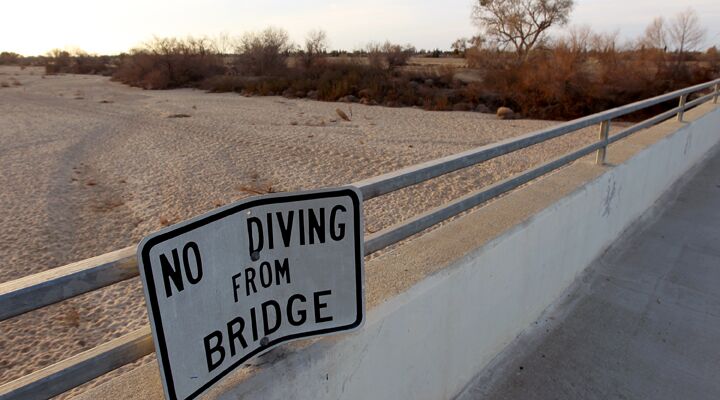
Epic Drought Turning California Into a Cursed State
For three straight years, a punishing drought has devastated California and much of America’s West and Southwest.
President Obama visited California on February 14 to assess the severity of the drought. “California is our biggest economy [and] our biggest agricultural producer, so what happens here matters to every working American,” he said, “right down to the cost of food that you put on your table.”
2013 was officially California’s driest year in 119 years of record-keeping. According to Prof. B. Lynn Ingram of the University of California, Berkeley, it represented the most devastating drought in almost 500 years.
According to the U.S. Drought Monitor, almost 99 percent of California is “abnormally dry.” At least 60 percent of the state is experiencing “extreme drought,” and almost 10 percent is experiencing “exceptional drought.” Fire risk is high in many parts of the state. Seasonal firefighters worked all year round in 2013 because of this risk. As a consequence, camping has been essentially outlawed.
For the first time in 54 years, the State Water Project, California’s main municipal water distribution system, announced that it would not be able to supplement water supplies to local agencies, including farmers. About 40,000 residents of 17 rural communities may run out of water within the next 120 days.
Through billboards on California highways and other means, the state is asking Californians to drastically reduce their water usage voluntarily by taking “stop-start-stop-start” showers, not watering lawns and gardens during the day, sweeping driveways instead of hosing them down, flushing toilets less frequently and not refilling swimming pools.
Sacramento and Folsom residents have been mandated to reduce their water consumption by 20 percent. Santa Cruz restaurants have been asked not to offer water unless customers request it.
State-wide mandatory conservation measures have not yet been enforced; however, they are likely options, as Gov. Jerry Brown indicated when he declared a water emergency on January 17.
The fact that California has not mandated more drastic measures state-wide does not mean the drought is not severe. Such measures are politically charged. Water districts, for example, would lose revenue. The Santa Clara Valley Water District estimates that it would lose $20 million from enforcing a 10-percent reduction in water consumption. The Los Angeles Metropolitan District says it would lose $150 million from a 20-percent reduction. “We want to save the big hammer for when we know it’s really bad,” one water district general manager said. But delaying conservation efforts now may make the rationing much worse later if the drought doesn’t break.
Conditions are already really bad in California. Aquatic life has been hit hard. Fishing has been banned in most of California to protect endangered aquatic species like salmon. Meanwhile, ranchers struggling to feed their livestock have been forced to cull or sell their herds en masse. The U.S. is heavily reliant on California for much of its food; dwindling production will seriously impact food availability and prices nationwide.
About 80 percent of California’s freshwater supply is used for agriculture. Farmers of annual crops are reducing the acreage of crops they are planting to match the available water supplies. Such an option, however, is not available for fruit tree farmers, whose trees and vines continue from year to year and, this year, are dying. In 2009, Ken Shackel, a tree crop expert at the University of California, Davis, observed a 50-percent reduction in yield if trees were not watered for a year. A year of normal irrigation the next year only improved yield by 10 percent. After another year of normal irrigation, yields finally returned to normal. “However bad this year [is], it will be worse next [year],” Shackel surmised for this year’s farmers. “Really bad this year means really, really bad next year.”
When President Obama visited California, he announced that the federal government would give the state $183 million in aid, including $100 million for a controversial farm bill. After blaming California’s drought on human-caused global warming, the president also announced his plan to have Congress provide $1 billion for a “climate resiliency” program. The program, if passed, will fund research and infrastructure that would help in the preparation for climate disasters.
However, California’s climate problems are too big for money to solve. California has been the home of some of the choicest blessings on Earth. Our free book The United States and Britain in Prophecy explains why those blessings are being replaced by curses. Request your free copy of The United States and Britain in Prophecy to understand the real “human activity” that has caused California’s curses. And catch the recent Trumpet Daily episode on this very subject.
